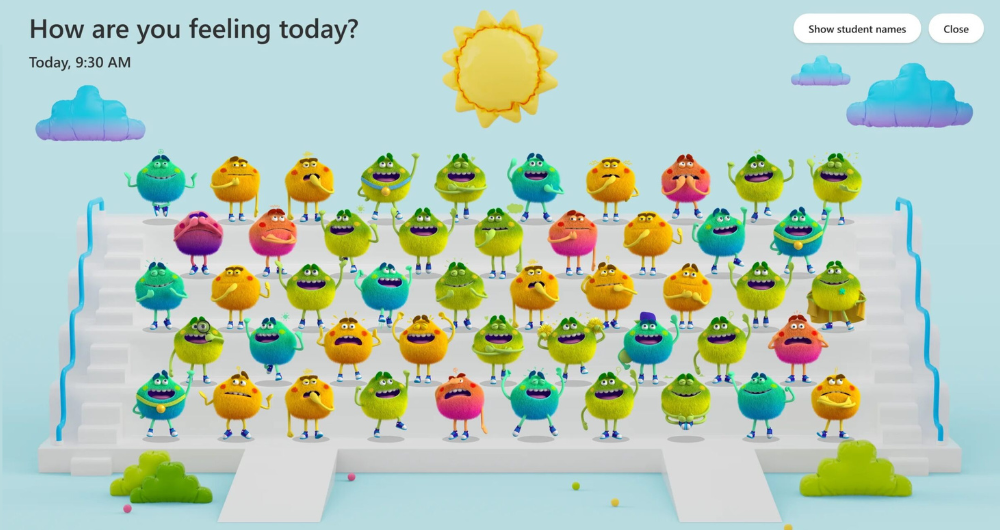
The ways people interact, socialise and work are shifting rapidly. In fact, the preferred form of communication today is text and instant messaging (just ask any teenager), which is giving rise to some serious gaps in social-emotional skills.
What’s more, the growing reliance on instant messaging – which can’t always provide the human contact and perspective that comes from face-to-face dialogue – has caused a distinct separation and serious disconnect, according to Connie Li , Microsoft Specialist for Education at ASI Solutions.
Even worse, the casualty of it all, Li said, is people’s social and emotional skills – a phenomenon causing a ripple effect across society for years to come – and prompting the call for a review of Social Emotional Learning’ (SEL) and how technology can support effective teaching and learning of these skills and increase inclusion.
Expect these challenges to stick around for the long-haul. Statistics show by 2030, 30 to 40% of jobs will require explicit social-emotional skills, according to research from Microsoft and McKinsey & Company’s Education Practice in its summary report: The class of 2030 and life-ready learning – The technology imperative.
Time to ‘Reflect’
So, what’s the solution? How can technology help bridge the gap between feeling detached and feeling emotionally supported – but also prepare students for the advanced jobs of the future that require a deeper level of social-emotional skills?
Li said look to advancements on the technology front, and investigate the updated tools that can alleviate the disconnect and help foster social emotional learning in the classroom.
“Over the next 10 years, the pace of technological change will be highly disruptive to the world of work,” according to the Technology and the Future of Australian Jobs report. It estimates 630,000 jobs could be displaced by new technologies over the next decade. This “displacement effect” equates to 7.3% of the country’s existing workforce.”
“If the education system, and those in or entering the workforce, are not responsive to changing skill needs, there is a risk of higher unemployment, underemployment and lower earnings prospects, which in turn are likely to reduce engagement in the labour market.”
Addressing a need in the market to better support connection, expression and learning – sparked in part by the isolation widely suffered by children amid the global pandemic – Microsoft, for its part, is offering a range of tools and accessible features as part of its inclusive technology.
The features – built-in across Windows and Microsoft 365 – include tools like screen reading; speech-to-text; Seeing AI; live captions; translation; and Immersive Reader.
Microsoft’s Reflect for its part, supports students in identifying and navigating their emotions by providing regular opportunities to share and be heard with Reflect in Teams.
It has been updated to appear as a featured tab in each class – just like Assignments or Grades.
In the latest update, Microsoft has also included:
– The ability to create custom questions;
– Improved navigation for viewing previous check-ins from Teams and from Class Notebook; and
– A ‘Together’ view – helping students build empathy with a friendly data view of reported Feelings Monsters.
“Technology in SEL is great, but the tools we use to access these needs to be accessible and inclusive,” Li said, further explaining why inclusive technology matters in developing social-emotional and cognitive skills.
“Up to 50% of instructional time can be lost managing students’ needs, so the tools available to us through Surface and M365 will not only help the students engage better with their content, but also enable them to become more independent, which in turn, also helps support their teacher by freeing up their time in the classroom.”
And schools can’t always do it alone. In fact, rolling out technology programs and initiatives can be overwhelming – particularly on the digital skills front.
That’s why the school community needs to seek out the know-how of a trusted technology provider that can offer consistent training and support, but also position schools to sit comfortably in the SEL driver’s seat by empowering learning that’s inclusive and accessible to all.

What is SEL?
The Collaborative for Academic, Social, and Emotional Learning (CASEL) explains social and emotional learning (SEL) as students obtaining skills that “enhance [their] capacity to integrate skills, attitudes, and behaviours to deal effectively and ethically with daily tasks and challenges.”



